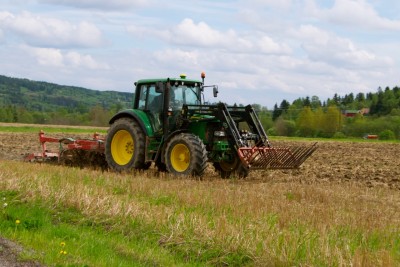Norwegian farmers’ organizations are demanding a NOK 45,000 (over USD 8,500) increase in income for the average farmer from the state next year, an 18 percent rise, as part of annual income negotiations with the government.

The total cost to the government to meet the farmers’ demands would be NOK 2.6 billion (nearly USD 500 million). The proposed increase for the average farmer consists of a general wage increase of NOK 18,500 (over USD 3,500), a further NOK 17,500 (USD 3,318) in a special low-paid increase (as most farmers are classed as low-paid) and a final NOK 9,000 (more than USD 1,700) increase to make up for the fact that farmers were felt to be lagging behind in the settlement agreed last year.
The Norwegian Farmers’ Union and the Norwegian Farmers’ and Smallholders’ Union handed their demands to the government on Thursday as part of the annual state income negotiation round. Their income suggestions were coupled with further demands for protectionist measures against the important of products like cheese, meat and milk, described in their submission as “a completely basic condition for Norwegian food production,” according to newspaper Aftenposten. The negotiations begin a day after the Organization for Economic Cooperation and Development (OECD) confirmed that Norwegian farmers are the world’s most subsidized, with subsidies making up 66 percent of farmers’ total income compared to only 22 percent in the EU.
‘Realistic and optimistic’
The leader of the Norwegian Farmers’ Union, Nils T Bjørke, told Norwegian Broadcasting (NRK) that farmers deserved the increase in order to close the gap between their earnings and those in other industries, and because of increased costs including “increased diesel prices, fertilizer and expected increases in interest rates.” Speaking to Aftenposten, he pointed to studies that showed that transfers from the state to farmers had fallen from around 7 percent of the state budget in the 1980s to 1.5 percent in 2010. According to NRK, he believes the plans are moderate and reflect the signals given by the governing parties at their annual conferences. “It is more important than ever that Norway takes responsibility for food production,” he added, describing himself as “optimistic” at the start of the negotiations. Aftenposten also reported that Bjørke’s demands were based on an evaluation of the worldwide situation, with record high food prices and unrest in poor parts of the world because of food shortages and prices.
Anne Merete Furuberg, leader of the Norwegian Farmers’ and Smallholders’ Union, joined Bjørke in the joint submission to the government, and also described the demands to NRK as “realistic and optimistic.” She added that “the governing parties can now sign off what they have promised us at their annual conferences.”
The chief negotiator on behalf of the government’s agriculture and food department, Leif Forsell, told NRK that “the demands are extremely high by anyone’s standards, and it is especially a problem that nearly 80 percent of what is demanded is over the amount allocated in the state budget.” He stated that he does not want to pass on a larger part of the cost of increasing farmers’ income to consumers in the form of higher food prices. “A relatively bigger part of the demand would need to be financed through higher prices, but there will not necessarily be a bigger burden on consumer if the demand becomes smaller,” he added. Forsell also rejected the unions’ comparisons between farmers and workers in other sectors, stating to Aftenposten that he did not think the government “could guarantee a certain income increase for private businesses.”
Increased prices for consumers
It is expected that increased income for farmers will increase costs to consumers. Bjørke suggested that “meat products, dairy products, fruit and vegetables, and bread products would increase in price,” with the average cost to a family of four being roughly NOK 1.30 (USD 0.25) per day. The union leader said to NRK that he “believes the majority of Norwegians see that this is a cheap investment in order to have Norwegian food in the future too.”
Government negotiator Forsell does not agree with the unions’ calculations for the price increase for consumers, which he believes is as much as four or five times lower than what is would be in reality. He says their calculations only include the price paid for the goods directly, not the indirect costs accrued by the taxpayer through increased state support financed through taxation. He added that their estimates also ignore increased costs added on through the supply chain.
Just yesterday, it was revealed that Norwegian consumers were losing money through subsidizing many farm exports, especially of famous Jarlsberg cheese, on which consumers effectively lose over NOK 500 million (nearly USD 95 million) a year because of export subsidies.
Opposition parties, including the Conservative Party and the Progress Party, called for less public support for part-time farmers, who usually had other sources of income. A Conservative Party spokesperson, Svein Flåtten, commented that “full-time farmers have the worst total income of all farmers,” while Torgeir Trældal of the Progress Party said that the current system means that smaller producers and those that farm as a hobby “are prioritized,” which consumers “have to pay for.”
Join our Reader Response if you’d like to comment on this story.

